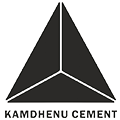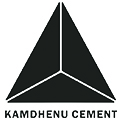Introduction
In any construction project, having a strong foundation is crucial. A sturdy structure relies on the quality of materials used, and one of the most important components is cement. Cement plays a vital role in providing the strength and durability necessary for buildings to withstand the test of time.
In this blog, we will dive deep into the world of cement, exploring its composition, types, factors to consider when choosing the right cement, and the best cement brands available in the market, Kamdhenu Cement.
Understanding Cement
What is cement?
Cement can be defined as a fine powder that, when mixed with water, forms a paste that hardens over time. This paste is capable of binding various materials together, thereby giving structure and strength to construction projects. Furthermore, it serves as the foundation for the buildings we live and work in, consequently ensuring their stability and durability.
The science behind cement
The production of cement involves a series of chemical reactions. It starts with the extraction and blending of raw materials, such as limestone, clay, and other minerals. These materials are crushed and heated in a kiln to form a clinker, which is then ground into a fine powder to become cement. The chemical reactions taking place during this process contribute to the binding properties of the final product.
Types of cement
Cement is available in various types, each with its unique composition and purpose. The most common types of cement include Ordinary Portland Cement (OPC), Portland Pozzolana Cement (PPC), and Portland Slag Cement (PSC).
OPC is ideal for general construction purposes, while PPC and PSC offer specific advantages like improved workability, reduced heat generation, and enhanced durability, making them suitable for specialized applications.
Factors to Consider When Choosing Cement
When selecting cement for a construction project, several factors should be taken into consideration.
Strength and durability
Different types of cement have varying strengths and durability properties. Moreover, the strength of a cement mixture determines its ability to withstand external forces and loads. It is crucial to choose the appropriate cement grade based on the specific requirements of the project, taking into account factors such as the type of structure and expected loads it will bear.
Setting time
Setting time refers to the time it takes for cement to solidify and gain strength. The setting time can vary depending on the type of cement used, as well as environmental conditions such as temperature and humidity. It is essential to consider the setting time when planning construction projects to ensure proper curing and efficient work progress.
Environmental impact
In today’s environmentally conscious world, it is important to evaluate the environmental impact of cement production. Moreover, eco-friendly cement options have emerged, offering reduced carbon emissions and minimizing harm to the environment. Additionally, these alternatives contribute to sustainable construction practices.
Furthermore, the adoption of such eco-friendly cement can lead to a significant reduction in ecological footprint. Sustainability considerations, such as the use of recycled materials or alternative fuel sources in cement production, should be taken into account when choosing cement for a project.
Cost-effectiveness and availability
Analyzing the cost-effectiveness and availability of various cement options is vital in construction planning. While ensuring the quality and suitability of the cement, it is also important to consider the budget and availability of materials. In order to optimize construction outcomes, a delicate balance between quality and affordability must be struck. Consequently, this equilibrium is essential for achieving the desired results.
Best Cement Brands in the Market
One of the leading cement brands in the market is Kamdhenu Cement. Moreover, with a strong reputation for quality and reliability, Kamdhenu Cement offers a range of cement varieties suitable for different construction needs. Additionally, our products are known for strength, durability, and consistent performance, thus making them a popular choice among builders and contractors.
Applications of Cement in Construction
Cement finds extensive use in various construction projects, including residential, commercial, industrial, and infrastructural endeavours.
Residential projects
In residential construction, cement is utilized in building homes and complexes. Additionally, it serves as a binding agent in the construction of foundations, walls, and floors. Furthermore, the durability and strength of cement contribute to the stability and longevity of residential structures, ultimately providing homeowners with peace of mind.
Commercial and industrial projects
Cement plays a vital role in commercial and industrial structures such as office buildings, factories, and warehouses. It is commonly employed in the construction of load-bearing columns, beams, and slabs, thereby ensuring the structural integrity required for these establishments.
Infrastructural projects
Infrastructure projects, such as bridges, dams, and highways, rely heavily on cement.
The strength and durability of cement, therefore, make it a suitable material for bearing heavy loads and, consequently, withstanding environmental factors. Additionally, it ensures the safety and, moreover, the longevity of such critical infrastructure.
Cement Quality Assessment
Assessing the quality of cement is crucial to guaranteeing the integrity of construction projects. The industry follows standardized quality testing procedures to ensure consistency and reliability.
Standard quality testing procedures
Quality testing involves various industry-established methods, such as testing for fineness, chemical composition, compressive strength, and consistency. Furthermore, these tests help to verify that the cement meets the necessary standards and specifications.
Key quality parameters
Important parameters to consider when assessing cement quality include fineness, strength, and consistency. Fineness refers to the particle size of the cement, which affects its workability. Strength is a measure of the cement’s ability to withstand external loads, and consistency ensures uniformity in the mixture throughout the construction process.
Maximizing Cement Performance
To maximize the performance of cement in construction projects, certain practices should be followed.
Proper cement storage
Proper storage of cement is essential to maintain its quality. Initially, it is advisable to keep cement bags in a clean and dry area, shielded from moisture and extreme temperatures. Moreover, storing cement away from direct contact with the ground and other construction materials helps prevent degradation, ensuring optimal performance. Ultimately, adhering to these guidelines can significantly extend the lifespan of your cement supply.
Correct cement mixing techniques
Achieving the desired consistency and strength in a cement mixture requires proper mixing techniques. Following guidelines provided by the cement manufacturer, such as the appropriate water-cement ratio and the use of mechanical mixers, ensures a homogenous mixture that guarantees the expected performance of the cement.
Common Cement-related Issues and Solutions
While cement provides strength and durability to construction, certain issues can arise during and after the construction process.
Cracks and shrinkage
Cracks and shrinkage can occur due to various factors such as improper curing, inadequate mix proportions, or excessive water content. Preventive measures include proper curing techniques, the use of plasticizers, and minimizing water content to avoid potential issues and maintain the integrity of the concrete structure.
Improper setting
Issues related to cement setting and hardening can lead to inadequate bond strength and compromised durability. Detecting and troubleshooting problems such as improper water-cement ratio, incorrect curing methods, or temperature fluctuations helps ensure proper setting and hardening of the cement.
Innovative cement additives
Advancements in cement additives have led to improved performance characteristics such as enhanced workability, reduced water requirements, and increased strength. These additives, which consist of chemical compounds or mineral admixtures, offer a range of benefits that contribute to more efficient and durable cement mixtures.
Cement Safety and Handling
Safely handling cement is essential to prevent health hazards and ensure the well-being of workers and the environment.
Dos and don’ts of cement handling
When handling cement, it is crucial to wear protective gear such as gloves, masks, and goggles to avoid skin irritation and respiratory issues. Inhalation of cement dust should be avoided, and proper ventilation in the workspace is necessary. Spills should be cleaned immediately, and waste cement should be disposed of responsibly following guidelines set by local authorities.
Environmental impact mitigation
To minimize environmental harm, responsible cement disposal is necessary. Waste cement should not be discarded in regular trash bins or poured into water sources. Instead, it should be properly collected and disposed of in designated waste disposal areas.
Conclusion
Selecting the best cement is a crucial step in ensuring optimal construction outcomes. The strength, durability, and suitability of the cement used directly impact the stability and lifespan of structures. By understanding the composition, types, and factors to consider when choosing cement, as well as staying updated on emerging trends and best practices, builders and contractors can confidently make informed decisions.
With brands like Kamdhenu Cement providing reliable and high-quality options, the path to a strong foundation becomes clearer. Remember, the right cement choice is the first step towards building a sturdy and durable structure that stands the test of time.


